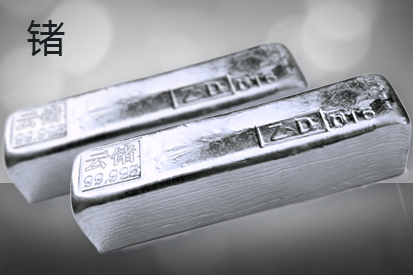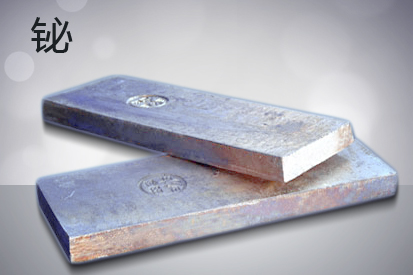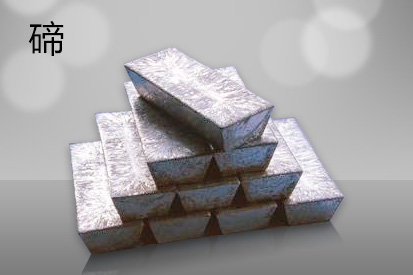



As the world looks
towards the turmoil in the Middle East and crisis inJapan, investors have once again
run to the safe haven assets of precious metals and oil. In this flight to
quality, many higher risk assets are quickly returning to bargain basement
levels. One such opportunity is directly correlated withJapan's high
tech economy. Despite the fact that long term rare earth metals prices are
soaring, stocks in the sector have plummeted on fears that the tsunami will
eradicate demand inJapan.
However, these fears have provided a long term opportunity for investors before
the rare earth crisis intensifies.
Building Blocks of High Technology
While
Scandium, Gadolinium and Yttrium don't exactly roll off the tongue, these
minerals form the building blocks of high technology. From slick flat panel
TV's and cell phones to wind turbines and MRI machines, these strategic metals
are finding their ways into our daily lives more and more. Terbium is one of
the key ingredients in low-energy CFL light bulbs and it takes roughly one ton
of neodymium for every megawatt of generating capacity a wind turbine has.
Hybrid cars use up to 25 pounds of these precious metals in their advanced
electric motors in order to increase efficiency. Currently, worldwide demand
outside ofChinafor rare earths totals about 60,000 tons per year.
Chinese Domination
Demand for these materials is only increasing as
populations continue to grow. The market valuefor strategic metals is
expected to reach 200,000 tons by 2014, or roughly valued at $2 to $3 billion.
Chinese requirements of rare earths are forecasted to exceed supply by 2012.
These supply and demand imbalances are a real cause for concern. Mostly due to
its incredibly lax environmental policies,Chinacurrently produces more than
95% of global supply of rare earths. During the second half of 2010,Chinaslashed
export quotas by 72% and for 2011,
the first round of export permits saw cuts of 35%. These cuts have caused
prices to skyrocket. One ton of neodymium is quickly approaching the $180,000
mark.
International Reactions
Governments around the world are takingChina's
dominance seriously. Recently, Congress initiated the ReSTART initiative aimed
at getting a foothold in the rare earth minerals market again and the US Trade
Representative plans to file a complaint with the World Trade
Organization againstChina's export reduction policies
of rare earths.Malaysiahas
partnered with Lynas Corp (OTCBB:LYSCF) to construct the first rare earth
processing plant outsideChinain over three decades.
A Portfolio Proposition
Demand
for strategic minerals like lithium and europium will continue to increase as
they are critical components of a variety of new technologies. Energy
efficiency measures, consumer electronics, new infrastructure and green
renewable energy will be new major sources of demand. Given the recent
pullbacks in many of the stocks and funds that track the sector, it might be a
good time to add it to a long term portfolio.
ETF Options
The easiest way to the sector is through the Market Vectors
Rare Earth/Strategic Metals ETF (Nasdaq:REMX). The fund tracks 26
different global miners in the rare earth and strategic metals sectors
including Lynas as well as molybdenum miner Thompson
Creek Metals (NYSE:TC). The fund has nearly 60% of its $400
million in assets located inCanada,Australiaand theUnited States,
but does offer exposure to some of the Chinese companies in the sector.
Similarly, the Global X Lithium ETF (NYSE:LIT) offers exposure for
investors interested in that sector.
Stocks
For investors looking for pure-play exposure,
both Avalon Rare Metals (NYSE:AVL) andMolycorp (NYSE:MCP) are ideal candidates
in the space. Avalon hopes to bring online the first separation facility
outsideChinaby 2016, and
Molycorp recently announced that it plans to double its production in itsCaliforniamine by the
end of 2013.
Despite all the rare earth promise, there are
plenty of minefields. Three Chinese miners,China Shen Zhou
Mining & Resources (NYSE:SHZ), China
GengSheng Minerals(Nasdaq:CHGS) and Qiao Xing
Universal Resources (Nasdaq:XING) have all been cited as rare earth, in
spite of the fact that none of them have rare earth operations. Investors
looking towards the sector should stick to the more established players.
Bottom Line
The
recent tech pullback caused the tragedy inJapanhas created some interesting
opportunities. One such prospect exists in the rare earth and strategic
minerals sector. Used in everything from Apple's (Nasdaq:AAPL) iPods to lasers, the
demand for these minerals are exponentially increasing. Investors with long
term timelines can use the recent pullback to add either the Market Vector fund
or any of the established companies to their portfolios. (For related reading,
take a look at Understanding Rare
Earth Metals.)
Use the Investopedia Stock
Simulator to
trade the stocks mentioned in this stock analysis,risk free!
